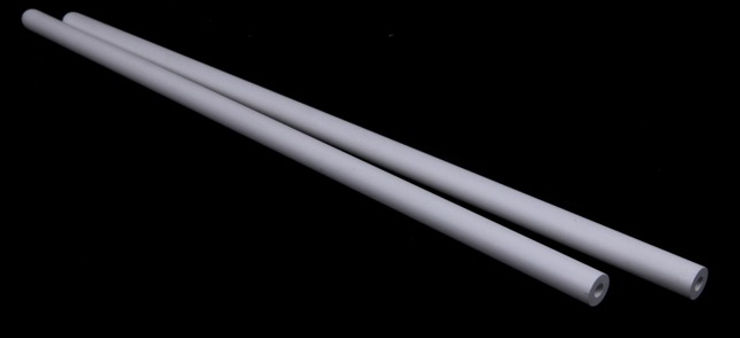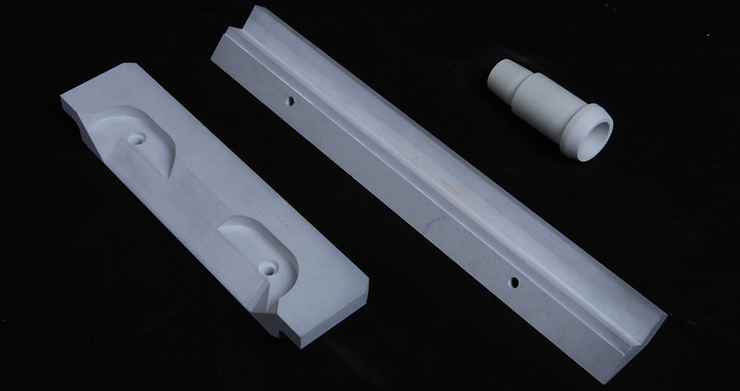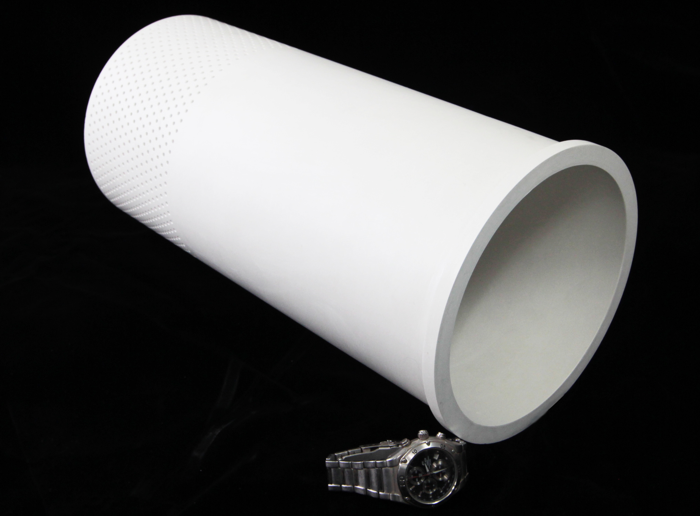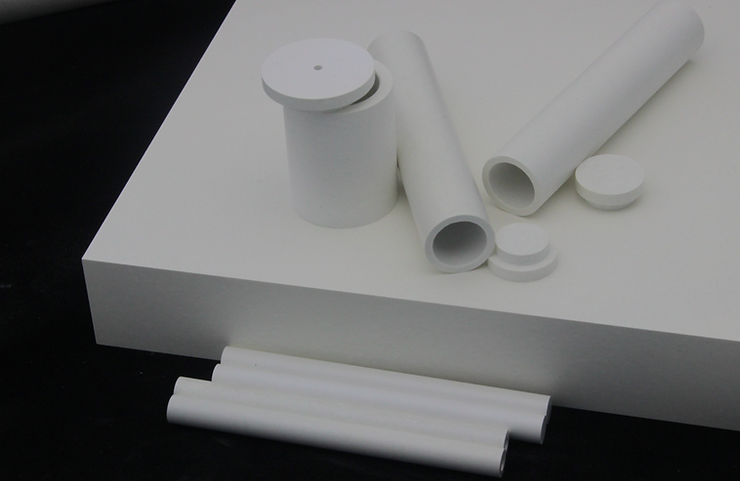Hexagonal boron nitride (h-BN) ceramics are a fascinating class of machinable ceramic materials that exhibit exceptional properties and find a wide range of applications in various industries. In this discussion, we will explore the history, properties, production methods, and applications of hexagonal boron nitride ceramics.
History
Hexagonal boron nitride was first synthesized in the mid-19th century by chemists who were attempting to produce diamond-like materials. However, it wasn’t until the 20th century that its potential as a ceramic material was recognized. In the early 1950s, h-BN was successfully synthesized in the form of fine powders, which paved the way for its extensive study and application in the following decades.

Boron nitride ceramic properties
Hexagonal boron nitride ceramics possess several remarkable properties that make them highly sought after in various industries. These properties include:
Thermal Stability: h-BN ceramics exhibit excellent thermal stability and can withstand extremely high temperatures. They have a melting point above 3000°C and can maintain their structural integrity even at elevated temperatures.
High Thermal Conductivity: hBN ceramics have high thermal conductivity, making them excellent candidates for applications that require efficient heat dissipation. Their thermal conductivity is comparable to that of aluminum oxide ceramics, while being electrically insulating.

Electrical Insulation: h-BN ceramics are highly electrically insulating, which makes them ideal for applications in high-temperature environments where electrical insulation is crucial.
Chemical Inertness: Hexagonal boron nitride ceramics are chemically inert and highly resistant to most corrosive agents, including acids, bases, and molten metals. This property makes them suitable for applications in harsh chemical environments.
Low Friction Coefficient: h-BN ceramics exhibit a low coefficient of friction, comparable to that of graphite. This property, combined with its high thermal stability, makes it an excellent solid lubricant in high-temperature applications.
Production of machinable hBN
The production of hexagonal boron nitride (hBN) ceramics involves two main steps: synthesizing the BN powder and sintering the powder to obtain the desired ceramic shape.
Synthesis of BN Powder: The most common method for synthesizing BN powder is through the reaction of boron oxide (B2O3) and ammonia (NH3) at high temperatures. The reaction produces boron nitride in the form of fine powders. The particle size and purity of the powder can be controlled by adjusting the reaction parameters.
Sintering: After obtaining the BN powder, it is mixed with suitable binders and additives to form a green body, which is then subjected to a sintering process. Hot pressing is a common technique used for sintering h-BN ceramics. In this process, the green body is subjected to high temperature and pressure to promote densification and bonding between the powder particles, resulting in a dense ceramic.
Machining: After sintering, the ceramic is often machined to achieve the desired dimensions and surface finish. This process involves cutting, grinding, and polishing the ceramic blanks. As a machinable ceramic, this process is not hard for BN. Once the machining started, it won’t take too much time. That’s why the lead time for boron nitride ceramics could be as short as 1-2 weeks, even for custom designed parts. Although the machining is on boron nitride is easy, the available design is still limited by the largest size of boron nitride blanks available. QS Advanced Materials Inc supplies one of the largest blanks in market, which is 16″x16″x8″. It means any single parts beyond this dimension shall be extremely hard to make.

Boron nitride ceramic applications
Hexagonal boron nitride ceramics find numerous applications across various industries due to their unique properties. Some of the key applications include:
Nozzles: h-BN ceramics are widely used as nozzles in industries such as metallurgy and chemical processing. Their excellent thermal stability and resistance to corrosion make them suitable for high-temperature and chemically aggressive environments.
Crucibles: hBN crucibles are used in the production of semiconductors and other high-temperature processes. They provide a chemically inert and thermally stable environment for materials during melting and solidification processes. Check here for the list of QSAM’s regular made BN crucibles

Liners: h-BN ceramic liners are used in physical vapor deposition (PVD) equipment, where they act as insulating and protective layers. They prevent contamination and provide a thermally conductive surface for efficient heat transfer during the deposition process. The major reason to use boron nitride is it’s insulating property and thermal shock resistance. Hot pressed boron nitride ceramics also works great in high vacuum circumstance. The only issue is the hardenss is too low, so there are several composite hBN developed to enhance the hardness, as well as wear resitance. As an exmaple, aluminum nitride is frequently used, due to its high thermal conductivity and hardness. Some brands of aluminum nitride composite boron nitride ceramics are BIN77 with Momentive Performance Materials and our ALNBN.
Insulators: hBN ceramics are also employed as electrical insulators in high-temperature environments. They find applications in industries such as aerospace, where electrical insulation is required in extreme conditions.
Hot pressed boron nitride ceramics possess exceptional properties, including thermal stability, high thermal conductivity, electrical insulation, chemical inertness, and low friction. The production of h-BN ceramics involves synthesizing the BN powder and sintering it through techniques like hot pressing. These ceramics find diverse applications as nozzles, crucibles, liners, and insulators in various industries, particularly in PVD equipment.
